Prøve GULL - Gratis
BUG Detective
Muse Science Magazine for Kids
|Muse January 2025: Invisible Kingdom
A burglar sneaks into a house on a quiet street in New York City. He walks through the house, touching countertops and door handles. Finally, he steals a single card from a full deck. Then he leaves.

Nearby, Jarrad Hampton-Marcell is waiting. But he's not a police officerhe's a researcher, an assistant professor studying microbial ecology at the University of Illinois Chicago. He set up this robbery, and many others like it, as a science experiment. He's part of an effort to develop a brand new way to catch criminals-by collecting and analyzing their microbes.
Microbes include bacteria, fungi, and other microscopic critters. They cover your body, inside and out. But these miniscule hitchhikers don't always stay put. You breathe them in and out. Clouds of microbes waft off your skin all the time, landing wherever you happen to be and coating whatever you might touch. "We shed bacteria all of the time," says Hampton-Marcell. "We shed about 30 million cells per hour." Like it or not, every single one of us is Pig-Pen from the Peanuts cartoon, surrounded by a cloud of invisible bugs.
And this cloud could say a lot about you. "Your microbial community is very unique to you," says Hampton-Marcell. He explains that the choices you make, such as the foods you eat, how active you are, and what antibiotics you take, "shape not only your life but also your microbial community." When you leave microbes from that community behind on the things you touch, you're leaving clues about who you are. It's a fingerprint made of microbes.
Whodunit?
Hampton-Marcell and his team set up the staged robbery in New York to find out if they could catch a robber using only these microbial fingerprints. Collecting such a fingerprint is easy-you just rub a cotton swab over the surface and then seal it inside a sterile container.
Denne historien er fra Muse January 2025: Invisible Kingdom-utgaven av Muse Science Magazine for Kids.
Abonner på Magzter GOLD for å få tilgang til tusenvis av kuraterte premiumhistorier og over 9000 magasiner og aviser.
Allerede abonnent? Logg på
FLERE HISTORIER FRA Muse Science Magazine for Kids
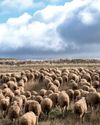
Muse Science Magazine for Kids
ANIMAL FIREFIGHTER TO THE RESCUE
Can animals help manage the risks of deadly wildfires?
3 mins
Muse July 2025: The Story Behind Wildfires
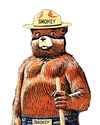
Muse Science Magazine for Kids
FIRE DANGER
WHY THE RISK OF WILDFIRES KEEPS GROWING
4 mins
Muse July 2025: The Story Behind Wildfires
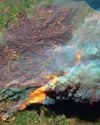
Muse Science Magazine for Kids
The Miller NEW Normal
WHAT TODAY’S WILDFIRES TELL US ABOUT OUR FUTURE
8 mins
Muse July 2025: The Story Behind Wildfires
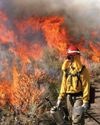
Muse Science Magazine for Kids
WOMEN AND FIREFIGHTING: A GOOD FIT
Jessica Gardetto is a firefighter. Her father was, too. “I grew up with my dad coming home smelling like wildfire and covered in soot,” she says.
1 min
Muse July 2025: The Story Behind Wildfires
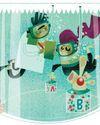
Muse Science Magazine for Kids
What is happening on your fingertips when they get all wrinkly in a hot tub?
—Felix G., age 10, Montana
1 mins
Muse July 2025: The Story Behind Wildfires

Muse Science Magazine for Kids
WHEN the SMOKE CLEARS
THE LINGERING EFFECTS OF THE RECENT PACIFIC PALISADES AND ALTADENA EATON FIRES
6 mins
Muse July 2025: The Story Behind Wildfires

Muse Science Magazine for Kids
PICKING TEAMS
Keep it fair with a strategy that relies on geometry.
2 mins
Muse July 2025: The Story Behind Wildfires
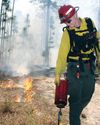
Muse Science Magazine for Kids
SHAN CAMMACK
WILDLIFE BIOLOGIST AND FIRE SAFETY OFFICER
3 mins
Muse July 2025: The Story Behind Wildfires
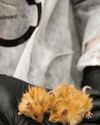
Muse Science Magazine for Kids
Scientists Create Mice With Woolly Mammoth-Like Fur
RESEARCHERS AT A COMPANY IN TEXAS ARE WORKING TO CREATE A LIVING ANIMAL THAT RESEMBLES THE EXTINCT WOOLLY MAMMOTH. Recently, they produced mice with traits of the large mammal. The mice all have coats with mammoth-like fur, and some of the small mammals also have genes that help them store fat. Both features would help the animals survive in the cold Arctic, where the woolly mammoth once lived.
1 min
Muse July 2025: The Story Behind Wildfires

Muse Science Magazine for Kids
Cool Sunshade Added to the Nancy Roman Space Telescope
THE NANCY ROMAN SPACE TELESCOPE IS A NEW TELESCOPE THAT NASA IS BUILDING AND WILL LAUNCH INTO SPACE, LIKELY IN EARLY 2027.
1 min
Muse July 2025: The Story Behind Wildfires
Listen
Translate
Change font size
